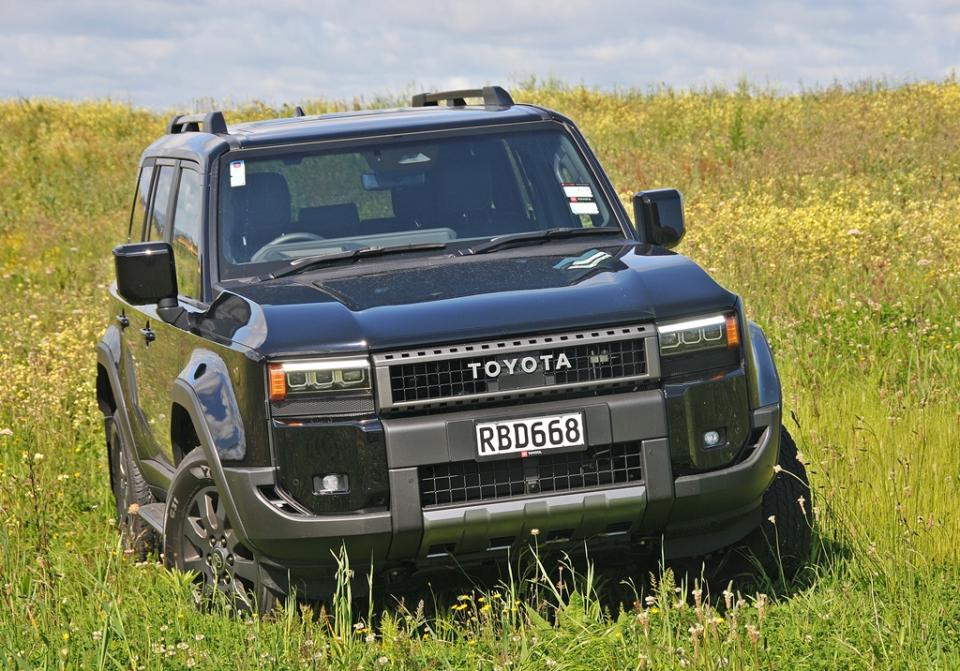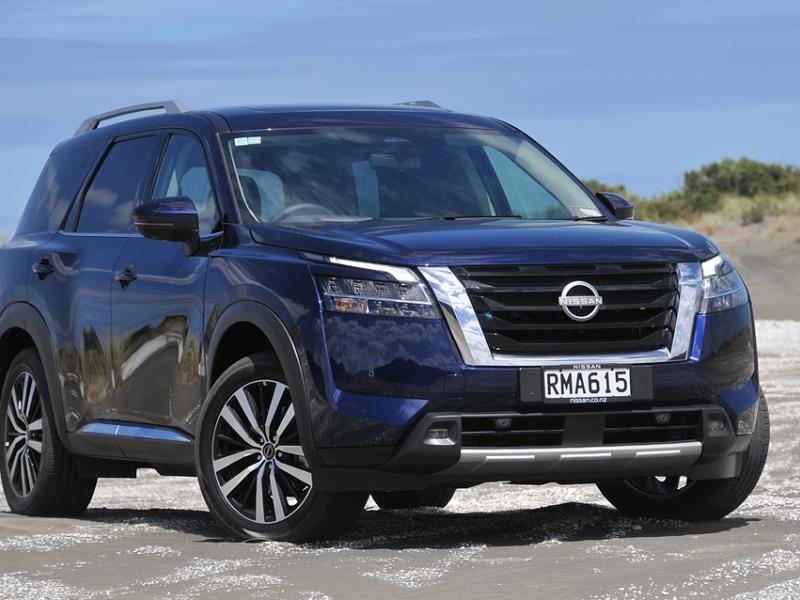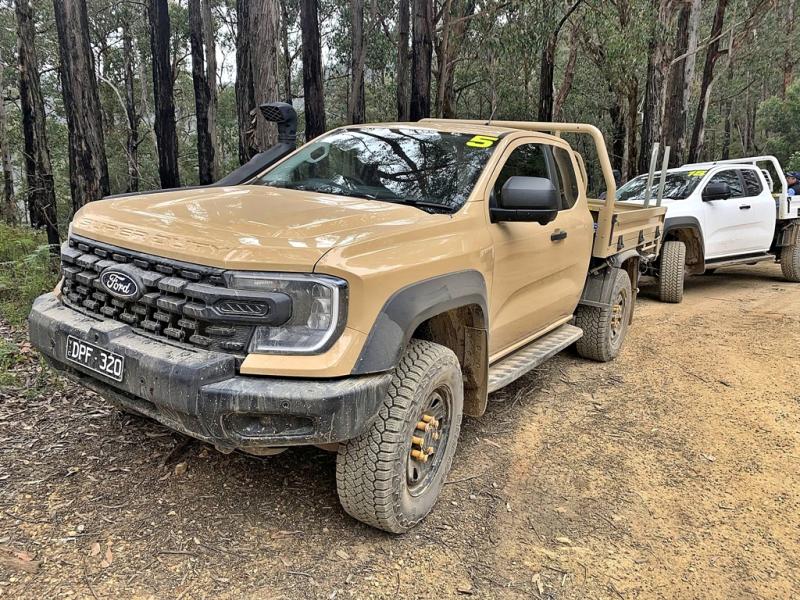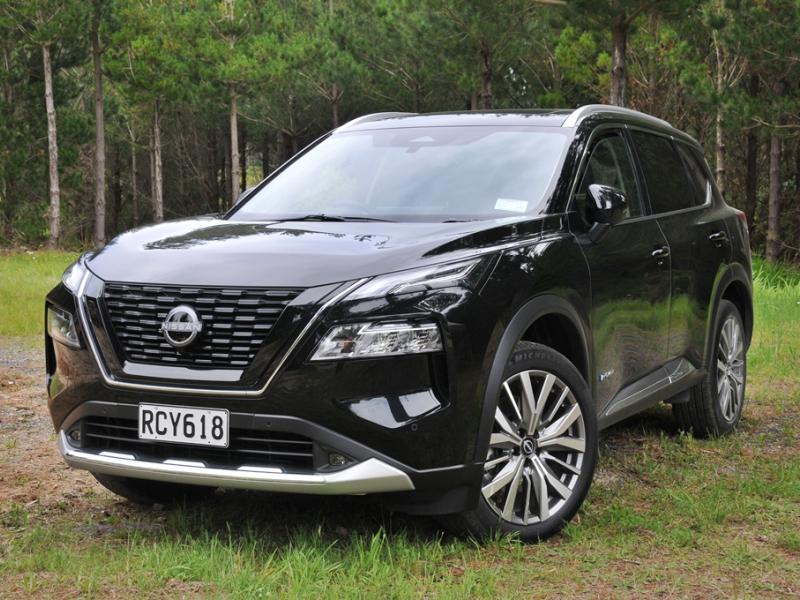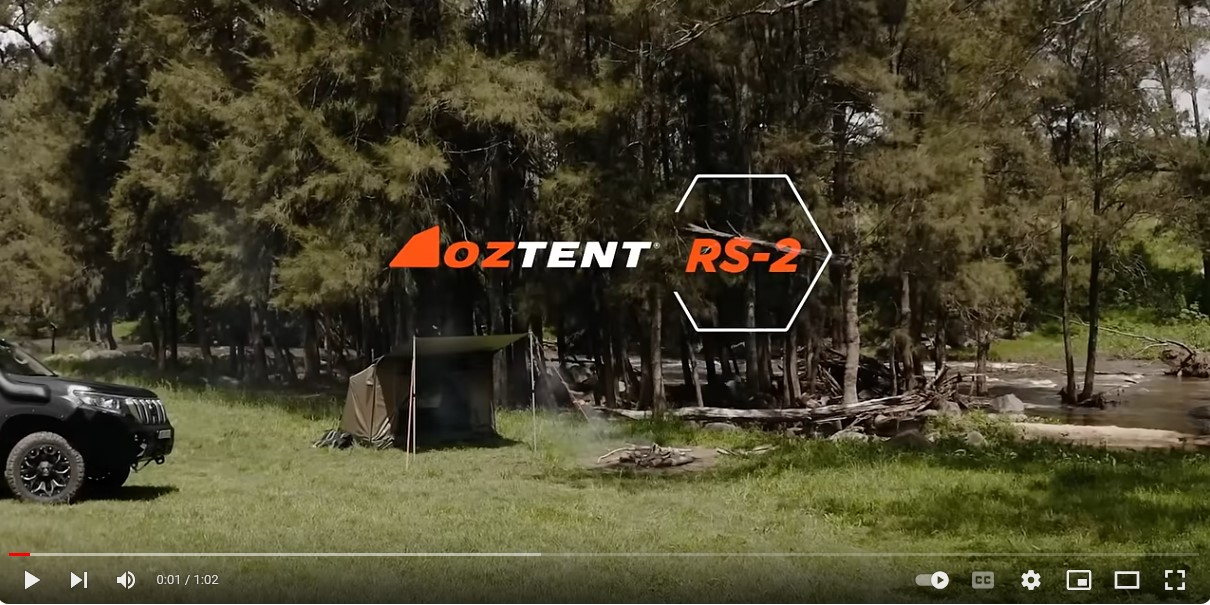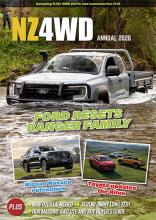This month, we’ve been back in a new Prado for a second look at Toyota’s most capable 4WD SUV.
This time it’s what may be the most popular version, the five-seater. In fact, during a week with this black Prado Adventure five-seater, we bumped into two owners who’d bought seven seaters – an Adventure and a range-topper VX Limited – who were regretting their choice and wishing they’d gone for a five-seater. Better cargo capacity and slightly lower weight, plus who is likely to need that third row on a regular basis anyway?
Prado has plenty of offroad credibility, as it should. We’ve not yet encountered track conditions that would cause us to think twice about continuing. Perhaps a drive up at Woodhill, on a set of all-terrain tyres is called for.
It’s utterly modern inside and out, a haven for occupants.
There’s plenty of functionality in the design. Body panels are made to be deformable so that they can stand up to being bashed about, and if the bumper does need replacing, it can be done in sections, left-middle-right.
The edges of the bonnet are higher than the centre, meaning the straight-ahead view of a rough track is good; Prado’s 360-degree camera looks after front guards and front wheels in tight going. So Prado is easier to place in narrow spaces, and the windscreen is more upright than before. That’s not great for aerodynamics, but did anyone buy a 4WD for its slippery shape?
The windscreen and commanding driving position also benefit visibility; the side window line is also 30mm lower than before.
The new Prado is longer than the version it replaces. It's built on the same TNGA-F platform as the mighty Land Cruiser 300, is 10mm longer than LC300 and the same width.
It’s also 100mm longer and 200kg heavier than the previous Prado.
The model range is four-strong, starting with the GXL, stepping up to VX, Adventure and VX Limited. There are five seat and seven seat models, though the five seaters are only available at GXL and Adventure level.
At the back, the option of a rear-mounted spare wheel has gone and the full-size spare sits under the vehicle. The tailgate hinges are at the top of the hatch, where earlier Prado versions swung from the side.
In tight parking areas, the cargo area can be accessed by opening the rear window.
The driver environment is suitably modern. There’s a pair of info screens and a fresh, utilitarian feel. Not inappropriately luxurious, nor cheap or unpleasant. The seats are ‘synthetic’ leather, ventilated where they touch occupants, and have seat heaters for winter and cooling fans for summer.
The second-row bench has an adjustable backrest, and easily flips forward to allow access to the cargo area or facilitate carrying big, bulky loads. Rear seat passengers get the expected array of power outlets along with a/c vents and a separate set of a/c controls. We tried the rear seats on drives around Auckland and found them very good.
Off-roaders will like the availability of a 220-volt power outlet in the cargo area.
The tech loading is enormous. Bluetooth capability is of course expected.
There’s handsfree mobile phone technology and inductive phone charging.
The audio system can be controlled using voice recognition.
There are seven USB-C port outlets.
Apple CarPlay and Android Auto are on board.
There’s also navigation (of course).
The heads-up display is good, very good. When a trip is active on the Prado’s navigation, turn instructions appear on the windscreen. Perfect for heavy traffic or on unfamiliar roads.
Driver assists follow modern practice, which some might call ‘nag till compliance occurs’, though at least the Prado nags quietly. These systems are essential to any manufacturer wanting a five-star safety rating. Toyota’s lane-keeping assistance is better than most, and when driving on clearly-signed roads, the visual indicator for the speed limit is reliable. Turning off any of the ADAS systems requires some menu diving within the digital instrumentation display, and has to be done every time the vehicle is started.
The engine is a slightly evolved version of the 2.8-litre turbodiesel in the Hilux, with the 48-volt mild hybrid system. It makes the same 150kW/500Nm as the Hilux and certainly does the job.
The hybrid assist enables the vehicle’s stop-start, gives a small but handy torque boost at low speed (up to 65Nm) and recaptures energy from braking and coasting to help run ancillaries. For most 4WD uses, mild hybrid is arguably a better choice than a full-on hybrid or plug-in. The mild-hybrid system really does enhance the low-speed torque of the diesel engine, and it helps Toyota meet its global emission reduction commitment.
Official fuel economy is 8.7l/100km.
The eight-speed automatic transmission is a significant improvement over the old six-speed. All Prados have Eco, Normal and Sport drive modes, while the VX versions have additional drive modes: Sport S, Sport S+, Custom and Comfort.
All models above the GXL also feature Multi Terrain Select, which offers Auto, Dirt, Sand, Mud and Deep Snow modes.
Brakes front and rear are ventilated discs; front suspension is independent dual wishbone with coil springs and stabiliser bar; rear is a four-link rigid axle with lateral control rod, coil springs and stabiliser bar.
Our Prado arrived on Yokohama Geolandar highway tyres, perfect for most Prado work but perhaps a little limiting in springtime mud or deep soft dry sand.
Off-road, there isn't much that will stop a Land Cruiser. Approach and departure angles are 31 degrees front/17 degrees rear and ground clearance 205mm (GXL). That rear angle will be a limiting factor offroad. There’s no ramp-over figure quoted.
Wading depth is 700mm.
All of what we noted about the seven-seat Adventure applies also to the five-seater – but that cargo area improvement will be a key factor for many buyers. Allied with the squared-off rear styling, it creates a supremely useful carrying ability in a very capable SUV.


